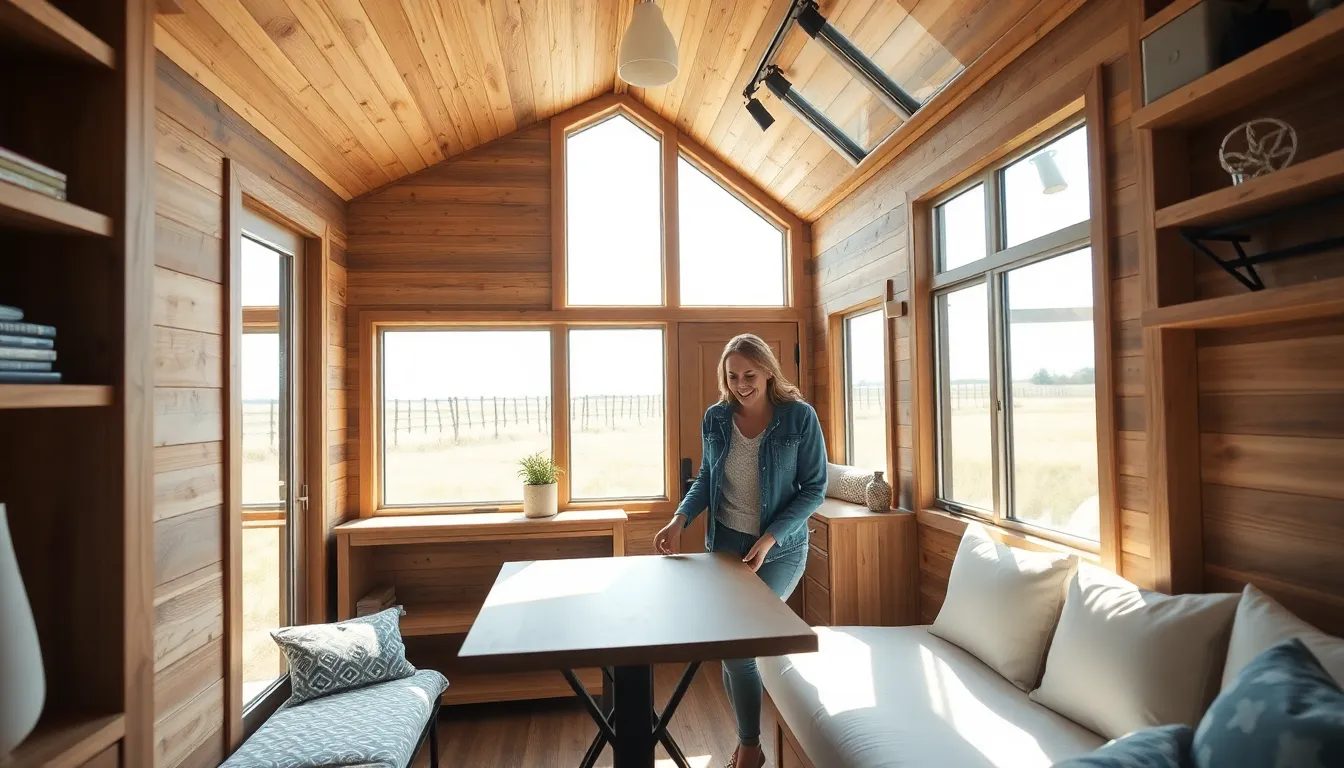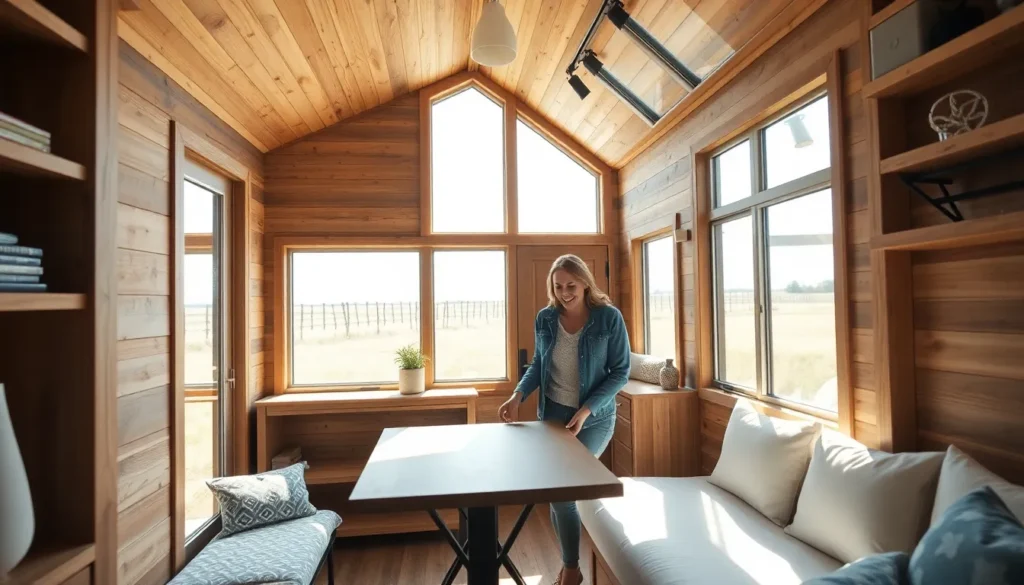In the great expanse of rural America, where the grass is greener and the Wi-Fi is… well, let’s just say it’s a little spotty, the dream of homeownership can feel like chasing a mirage. But fear not! Rural housing subsidies are here to turn that dream into a reality faster than you can say “country living.” These programs are designed to help those with big dreams and modest budgets find a cozy nook in the countryside.
Imagine sipping your morning coffee on a porch that overlooks rolling hills, all while knowing you didn’t break the bank to get there. Rural housing subsidies make this idyllic lifestyle not just a fantasy but an achievable goal. Whether it’s a charming farmhouse or a cozy cabin, these financial aids are the key to unlocking the door to a life filled with fresh air and starry nights.
Table of Contents
ToggleOverview of Rural Housing Subsidies
Rural housing subsidies play an essential role in promoting homeownership in rural areas. These financial assistance programs target individuals with limited income, making homeownership more accessible. They provide direct financial aid or subsidized loan programs for eligible families and individuals.
The U.S. Department of Agriculture (USDA) administers several key programs to support rural housing. The USDA’s Single Family Housing Guaranteed Loan Program offers guaranteed loans for qualifying applicants. This program helps lenders provide affordable financing options, allowing families to purchase homes in designated rural areas.
Another significant option is the USDA’s Rural Development Direct Loan Program. This program offers direct loans to low-income individuals and families, with benefits such as low interest rates and extended repayment terms. Since these loans don’t require down payments, they simplify the process of securing a home.
Additionally, many states and local governments offer their own housing assistance programs. These programs often complement federal initiatives, focusing on local needs and conditions. Funding from these programs varies by location and may include grants, tax credits, or other forms of assistance.
Rural housing subsidies significantly contribute to community development as well. By enhancing homeownership rates, these programs stimulate local economies and strengthen community ties. Residents gain stability, which can lead to improved local schools, businesses, and services.
Overall, rural housing subsidies form a vital framework for promoting affordable housing in less populous regions. These initiatives enable families to thrive in rural America, ultimately fostering a sustainable rural lifestyle.
Types of Rural Housing Subsidies
Rural housing subsidies come in various forms, each designed to assist low-income individuals and families in achieving homeownership. Two primary types include direct subsidies and tax credits.
Direct Subsidies
Direct subsidies offer financial assistance directly to qualified applicants. Programs like the USDA’s Rural Development Direct Loan Program provide low-interest loans to low-income households. Applicants benefit from no down payment requirements, making homeownership more attainable. Additionally, some states and local governments also provide direct assistance, further enhancing access to rural housing. These funds help cover down payments or closing costs, decreasing the financial burden on potential homeowners.
Tax Credits
Tax credits represent another significant form of support for those looking to buy rural homes. The Low-Income Housing Tax Credit allows developers to create affordable rental properties, indirectly benefiting homebuyers by increasing housing availability. Homebuyers can also access tax credits that alleviate financial strain. Various state programs enhance federal offerings, providing additional incentives. Utilizing these credits helps improve affordability for aspiring homeowners in rural areas, making the dream of homeownership more feasible.
Benefits of Rural Housing Subsidies
Rural housing subsidies offer significant advantages to individuals and communities. By facilitating homeownership, these programs contribute to broader benefits across various sectors.
Economic Growth
Rural housing subsidies stimulate economic growth in less populated areas. They inject capital into local markets, enabling families to invest in homes and improve properties. Increased property values contribute to attracting new businesses and creating jobs. These programs also encourage spending on goods and services, further supporting the local economy. The availability of affordable housing can reduce outmigration, keeping talented individuals in rural communities. This retention fosters a stable workforce as local businesses benefit from a consistent customer base.
Community Development
Community development flourishes alongside increased homeownership resulting from rural housing subsidies. Families owning homes tend to engage more with local initiatives, strengthening community ties. Higher homeownership rates lead to improved local infrastructure and services, including schools and healthcare. As neighborhoods become more stable, residents take pride in maintaining properties, enhancing the overall aesthetic of the area. Access to affordable housing fosters inclusivity, allowing diverse populations to contribute to community growth and vitality. Local governments often find it easier to plan for future development when housing stability exists within their communities.
Challenges Facing Rural Housing Subsidies
Rural housing subsidies face several significant challenges that impact their effectiveness. Accessibility issues and funding limitations hinder the progress of these essential programs.
Accessibility Issues
Access to housing subsidies remains limited for many prospective homeowners. Rural areas often experience a shortage of resources, making it difficult to navigate the application process. Geographic barriers contribute to accessibility, as applicants may live far from program offices. Furthermore, insufficient internet connectivity complicates the application process, leaving some eligible individuals unaware of available assistance. This lack of outreach diminishes the effectiveness of these programs, preventing many families from realizing their homeownership dreams.
Funding Limitations
Funding limitations pose another critical challenge for rural housing subsidies. Federal and state budgets often allocate inadequate resources for these programs, restricting the number of applicants that can receive assistance. On the ground, local organizations may lack the financial support necessary to promote awareness and facilitate applications. Consequently, programs can experience waiting lists, delaying homeownership opportunities for families in need. Over time, limited funding compromises the overall impact of subsidies, leaving many rural communities without the economic growth and stability that affordable housing can provide.
Conclusion
Rural housing subsidies play a crucial role in transforming the landscape of homeownership in rural America. By providing essential financial support these programs empower individuals and families to pursue their dreams of owning a home in picturesque settings. The benefits extend beyond mere homeownership; they stimulate local economies and foster stronger community ties.
While challenges remain in accessibility and funding these subsidies continue to be a lifeline for many. As efforts to improve outreach and resources grow the potential for rural housing subsidies to enhance community development and economic stability becomes even more promising. Embracing these opportunities can lead to thriving rural communities where families flourish and contribute to a vibrant local culture.













